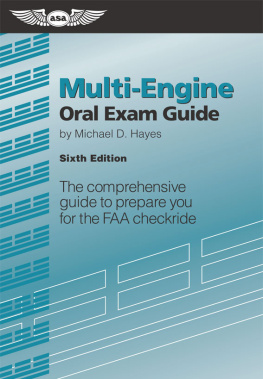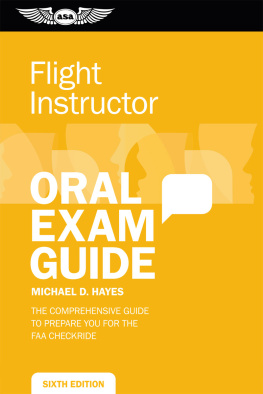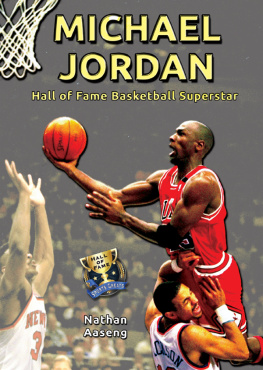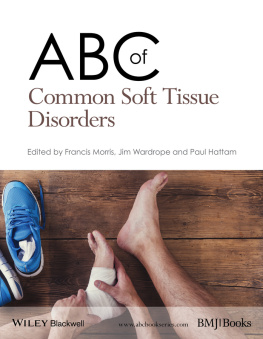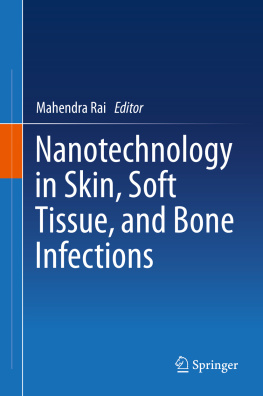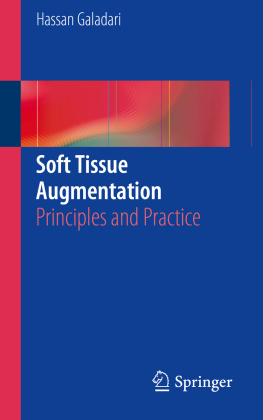Kahn Michael A. Hall J. Michael - The ADA Practical Guide to Soft Tissue Oral Disease
Here you can read online Kahn Michael A. Hall J. Michael - The ADA Practical Guide to Soft Tissue Oral Disease full text of the book (entire story) in english for free. Download pdf and epub, get meaning, cover and reviews about this ebook. City: Chichester;West Sussex;United Kingdom, year: 2014, publisher: John Wiley & Sons, genre: Home and family. Description of the work, (preface) as well as reviews are available. Best literature library LitArk.com created for fans of good reading and offers a wide selection of genres:
Romance novel
Science fiction
Adventure
Detective
Science
History
Home and family
Prose
Art
Politics
Computer
Non-fiction
Religion
Business
Children
Humor
Choose a favorite category and find really read worthwhile books. Enjoy immersion in the world of imagination, feel the emotions of the characters or learn something new for yourself, make an fascinating discovery.
- Book:The ADA Practical Guide to Soft Tissue Oral Disease
- Author:
- Publisher:John Wiley & Sons
- Genre:
- Year:2014
- City:Chichester;West Sussex;United Kingdom
- Rating:4 / 5
- Favourites:Add to favourites
- Your mark:
- 80
- 1
- 2
- 3
- 4
- 5
The ADA Practical Guide to Soft Tissue Oral Disease: summary, description and annotation
We offer to read an annotation, description, summary or preface (depends on what the author of the book "The ADA Practical Guide to Soft Tissue Oral Disease" wrote himself). If you haven't found the necessary information about the book — write in the comments, we will try to find it.
The ADA Practical Guide to Soft Tissue Oral Disease — read online for free the complete book (whole text) full work
Below is the text of the book, divided by pages. System saving the place of the last page read, allows you to conveniently read the book "The ADA Practical Guide to Soft Tissue Oral Disease" online for free, without having to search again every time where you left off. Put a bookmark, and you can go to the page where you finished reading at any time.
Font size:
Interval:
Bookmark:


This edition first published 2014 2014 by John Wiley & Sons, Inc.
Editorial offices: 1606 Golden Aspen Drive, Suites 103 and 104, Ames, Iowa 50010, USA
The Atrium, Southern Gate, Chichester, West Sussex, PO19 8SQ, UK
9600 Garsington Road, Oxford, OX4 2DQ, UK
For details of our global editorial offices, for customer services and for information about how to apply for permission to reuse the copyright material in this book please see our website at www.wiley.com/wiley-blackwell.
Authorization to photocopy items for internal or personal use, or the internal or personal use of specific clients, is granted by Blackwell Publishing, provided that the base fee is paid directly to the Copyright Clearance Center, 222 Rosewood Drive, Danvers, MA 01923. For those organizations that have been granted a photocopy license by CCC, a separate system of payments has been arranged. The fee codes for users of the Transactional Reporting Service are ISBN-13: 978-1-1182-7797-3/2014.
Designations used by companies to distinguish their products are often claimed as trademarks. All brand names and product names used in this book are trade names, service marks, trademarks or registered trademarks of their respective owners. The publisher is not associated with any product or vendor mentioned in this book.
The contents of this work are intended to further general scientific research, understanding, and discussion only and are not intended and should not be relied upon as recommending or promoting a specific method, diagnosis, or treatment by health science practitioners for any particular patient. The publisher and the author make no representations or warranties with respect to the accuracy or completeness of the contents of this work and specifically disclaim all warranties, including without limitation any implied warranties of fitness for a particular purpose. In view of ongoing research, equipment modifications, changes in governmental regulations, and the constant flow of information relating to the use of medicines, equipment, and devices, the reader is urged to review and evaluate the information provided in the package insert or instructions for each medicine, equipment, or device for, among other things, any changes in the instructions or indication of usage and for added warnings and precautions. Readers should consult with a specialist where appropriate. The fact that an organization or Website is referred to in this work as a citation and/or a potential source of further information does not mean that the author or the publisher endorses the information the organization or Website may provide or recommendations it may make. Further, readers should be aware that Internet Websites listed in this work may have changed or disappeared between when this work was written and when it is read. No warranty may be created or extended by any promotional statements for this work. Neither the publisher nor the author shall be liable for any damages arising herefrom.
Library of Congress Cataloging-in-Publication Data
Kahn, Michael A., author.
The ADA practical guide to soft tissue oral disease / Michael A. Kahn and J. Michael Hall.
1 online resource.
American Dental Association practical guide to soft tissue oral disease
Practical guide to soft tissue oral disease
Includes bibliographical references and index.
Description based on print version record and CIP data provided by publisher; resource not viewed.
ISBN 978-1-118-27798-0 (Adobe PDF) ISBN 978-1-118-27800-0 (ePub) ISBN 978-1-118-27797-3 (pbk.)
I. Hall, J. Michael, author. II. American Dental Association. III. Title. IV. Title: American Dental Association practical guide to soft tissue oral disease. V. Title: Practical guide to soft tissue oral disease.
[DNLM: 1. Mouth Diseases. 2. Diagnosis, Oral. 3. Soft Tissue Neoplasms. WU 140]
RK307
617.522dc23
2014001140
A catalogue record for this book is available from the British Library.
Wiley also publishes its books in a variety of electronic formats. Some content that appears in print may not be available in electronic books.
Cover image: iStock/ Tjerrie
Cover design by Nicole Teut
To our families and mentors for their support, patience, dedication, and lessons taught.
This textbook is intended to be a practical guide and reference source for the basic clinical aspects of soft tissue oral and maxillofacial disease. It is not intended to be an all-encompassing tome of oral pathology but rather to include those aspects of this dental specialty that are its most important foundational information and the most frequently encountered orofacial soft tissue diseases. The book is intended for health-care practitioners whose occupation involves encountering a variety of conditions and diseases of the oral cavity and its contiguous anatomic structures; it is not intended to be a reference source for oral medicine (i.e., details of the medical aspects of a particular disease within the oral cavity).
We envision this book not as one to reside on a clinician's library shelf gathering dust and rarely referred to, but rather one used regularly within the dental operatory to help the clinician's decision making: that is, deciding what is the best thing to do for the patient when a pathologic condition is initially discovered, how to determine its most likely provisional diagnosis or differential diagnosis, whether to biopsy or refer for consultation by a dental or medical specialist, and how to most accurately and effectively communicate that information to the patient so the patient can give informed consent about his or her treatment course and management.
Since 1984, when we began our residency training in oral pathology at Emory University's School of Dentistry (Atlanta, GA), we have increasingly recognized specific essentials of oral pathology that need to be learned, understood, and used by all dentists; furthermore, we have witnessed common diagnostic pitfalls and management mistakes. This book is the culmination of our cumulative and collective experiential wisdom gained during our training as well as our subsequent years of being in teaching institutions. By interacting with dentists, with dental and dental hygiene students, and with physicians and patients in clinical and educational settings as well as by participation in active oral pathology biopsy services and clinical consultation clinics, we have become aware of the lesions commonly encountered but misunderstood by them or unknown to them.
Michael A. Kahn
J. Michael Hall
I would like to recognize the many professionals who helped guide me in my quest to find my niche in health care, first as a general dentist and then an oral pathologist. Anyone who has graduated from dental school can attest to its trials and tribulations and I was fortunate to have a big brother, Dr. Barry Kennedy, who as an upperclassman helped guide me over the many hurdles encountered. One of the Emory dental school faculty, Dr. Patricia Moultin, also offered words of encouragement when most needed to persevere and I am forever indebted to her. During my early general dentistry career, in the U.S. Army, yet another individual, Dr. Jack Edge (Lt. Col., retired), stepped up and taught me the real-world dental tricks of the trade and guided me into correct and wise decisions. I decided to return to Emory for my postgraduate training in oral pathology and am especially indebted to my two primary mentors, Dr. D. R. (Ronnie) Weathers and Dr. Steven Budnick, as well as two of my fellow residents, Dr. Craig Fowler and Dr. J. Michael Hall (the coauthor of this textbook). Dr. John Kalmar, at that time a Young Dental Scientist Award winner, also helped and taught me more than I can now remember. Following my stint at Emory, I did a one-year postdoctoral fellowship at Temple University, where Drs. J.C. Chen, Arthur (Art) Miller, and John Fantasia fine-tuned my 3-year postdoctoral training and helped my early transformation into a dedicated faculty member. A seminal moment in my career occurred near the completion of my fellowship when Dr. James Turner asked me to interview for an assistant professor position at UTMemphis College of Dentistry. He took a chance on me and I am forever grateful as he, Dr. Harry Mincer, and Dr. Marjorie Woods gave me every opportunity to maximize my potentialI couldn't have been luckier and I am forever grateful. Soon after my arrival in Memphis I challenged the American Board of Oral Pathology examination and I am indebted to the oral pathologists of the AFIP, Dr. Fowler, and Dr. Robert Brannon for their willingness to share their education material and expertise. Approximately 11 years ago, my latest career phase began when Dr. Robert (Bob) Goode strongly supported my move to Tufts University School of Dental Medicine. Bob was a wonderful mentor who served his country admirably in the U.S. Air Force as an oral pathologist, including a stint as a forensic odontologist. When our country experienced military mass disasters Bob was there to provide closure to the families of the deceased. Unfortunately, poor health forced Bob into early retirement. At Tufts, I learned much with Dr. Eleni Gagari, subsequently with Dr. Lynn Solomon, and most recently with Dr. Hall. A special tip of the hat to Drs. Solomon and Hall for the extra workload they endured as I became more and more active in organized dentistry, particularly within our specialty. Finally, through all these years, the love and support of my deceased parents (Sylvia and Leo) and my current nuclear family (Sandy, Greg, Matt, David), and most especially the time they allowed me to be preoccupied with my professional duties, is appreciated beyond description.
Next pageFont size:
Interval:
Bookmark:
Similar books «The ADA Practical Guide to Soft Tissue Oral Disease»
Look at similar books to The ADA Practical Guide to Soft Tissue Oral Disease. We have selected literature similar in name and meaning in the hope of providing readers with more options to find new, interesting, not yet read works.
Discussion, reviews of the book The ADA Practical Guide to Soft Tissue Oral Disease and just readers' own opinions. Leave your comments, write what you think about the work, its meaning or the main characters. Specify what exactly you liked and what you didn't like, and why you think so.


